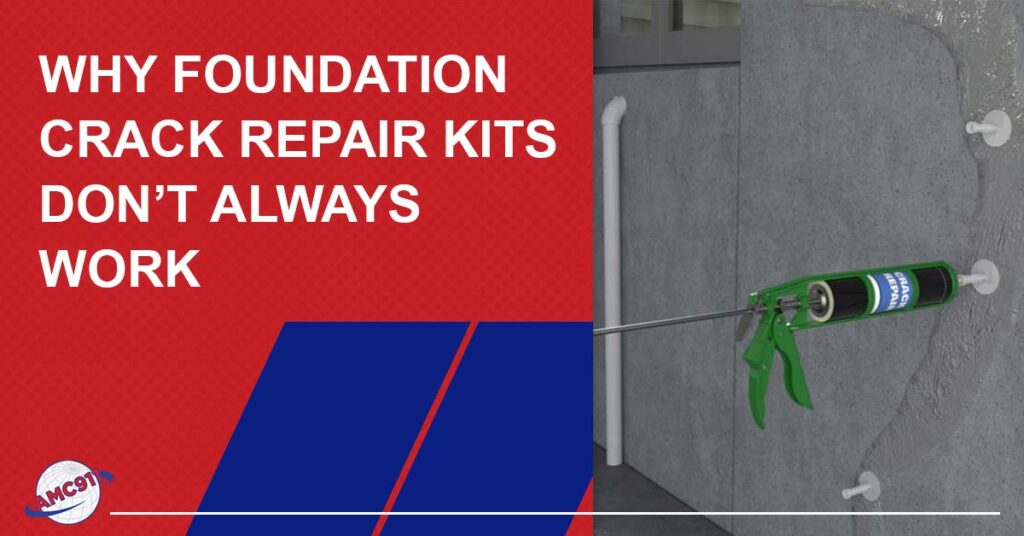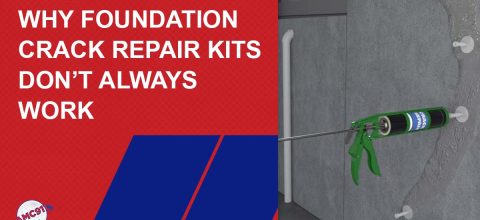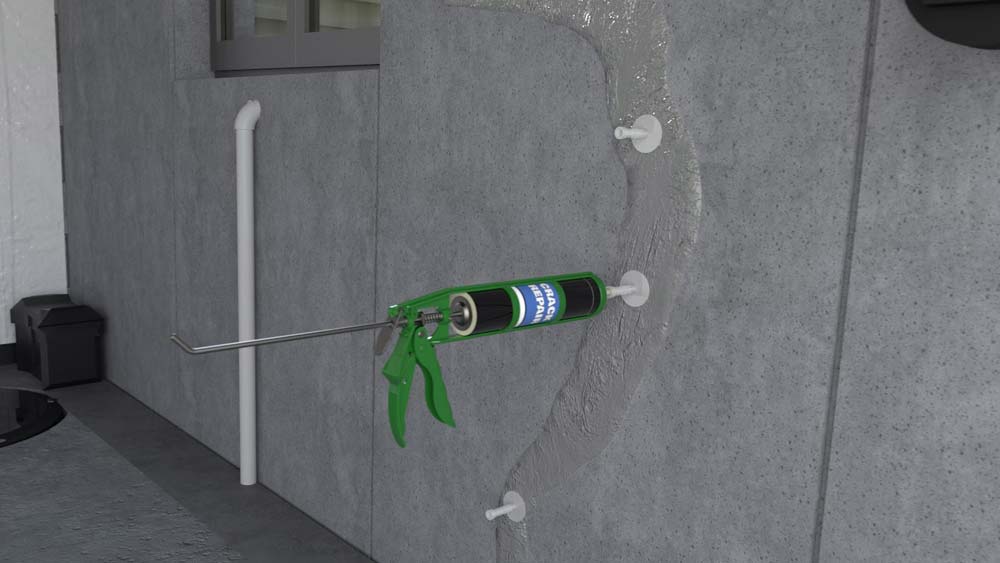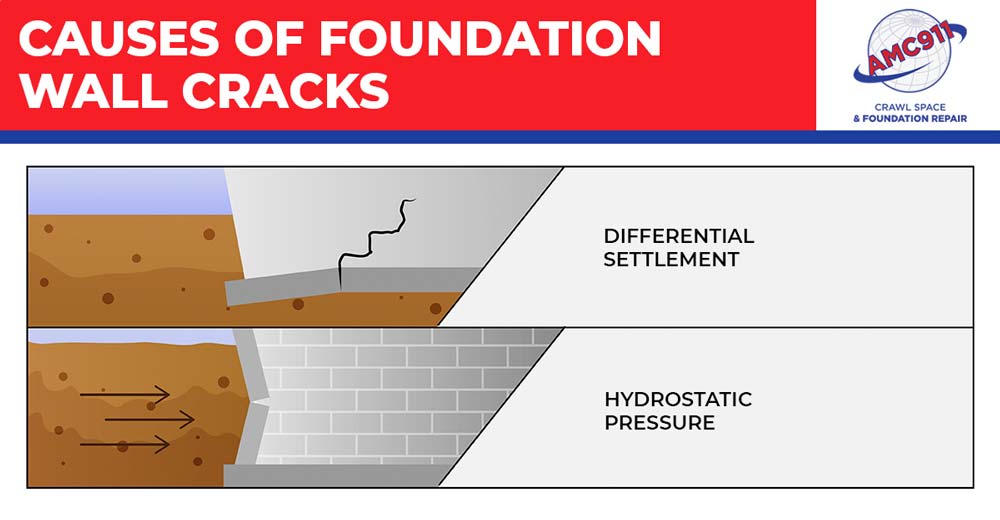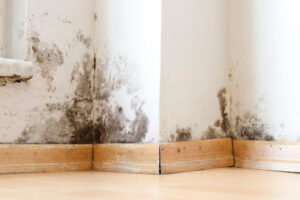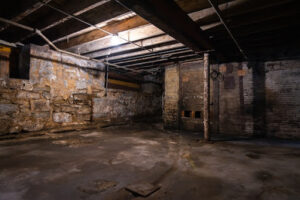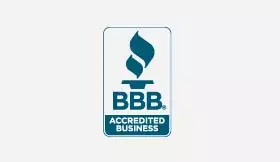If you’re dealing with foundation cracks, you’re likely looking for a quick fix. One of the options that may seem appealing to you is using a foundation crack repair kit. These kits can be convenient and are readily available, but they don’t always work as well as you might like.
What is a Foundation Crack Repair Kit
Foundation crack repair kits offer a quick and easy way to fill and cover any cracks in foundation walls. These kits often depend on materials such as polyurethane or epoxy. Homeowners and foundation repair teams can both use these kits to improve the appearance of their cracked foundation walls.
Where Foundation Crack Repair Kits Fail
The leading reason that foundation crack repair kits don’t work in every case is that they do not resolve the underlying issues that caused the wall cracks to form. Instead, foundation crack repair kits merely provide a cosmetic improvement. Using one of these kits allows you to conceal a crack, but it does not offer a way to remedy the source of the crack or prevent it from worsening.
Additionally, while foundation crack repair kits are sometimes easy to use, some people struggle to use them effectively. Unfortunately, misuse of one of these kits can worsen the overall state of your foundation walls. At times, this leads to a more expensive repair compared to what your walls required initially. This is because these crack repair kits don’t resolve the underlying problem.
Causes of Foundation Wall Cracks
To understand how foundation crack repair kits fail to address underlying crack causes, you need to know the underlying causes. Below are two of the most worrisome sources of foundation cracks:
- Differential foundation settlement: A small amount of uniform foundation settlement is expected. However, differential foundation settlement involves uneven shifts that damage your foundation and the rest of your home. Differential foundation settlement can cause issues throughout your home and worsen when left unaddressed.
- Hydrostatic pressure: The term hydrostatic pressure refers to the force that water exerts on the surfaces it contacts. When groundwater accumulates outside your foundation walls, it saturates the soil and places an immense amount of hydrostatic pressure on your foundation walls. In many instances, this pressure can cause your wall to bow inward and crack. As is true regarding differential foundation settlement, hydrostatic pressure is something you should address immediately.
What to Do Instead of Using Foundation Crack Repair Kits
Now that you know two of the most prevalent and problematic causes of foundation cracks, it’s time to learn how to resolve them without depending on a repair kit. In both cases, it’s best to rely on the expertise of a professional foundation repair team. The sections below will provide an overview of what those teams will do to solve the source problem.
Installing Foundation Piers for Differential Settlement (Underpinning)
The best way to resolve differential foundation settlement is by installing foundation piers. Foundation piers come in two common forms: push and helical.
Push piers consist of segments that your foundation team will press into the earth using a hydraulic pump. Helical piers are like giant screws that the foundation team will twist until they are embedded in the earth. After inserting the piers, the foundation team will connect them to the foundation. The connection the piers create allows the foundation repair team to raise the home to the maximum practical level. In other words, the foundation will be raised as much as possible without causing damage. Additionally, the piers provide stability that helps prevent future settlement.
Resolving Hydrostatic Pressure
To remedy hydrostatic pressure issues, drainage around the foundation must be improved. This often means installing a drain tile system. The first step in that process is excavation followed by a buried, perforated drainage pipe leading to a sump pit. Enhancing your drainage system makes your foundation better capable of managing water and preventing future hydrostatic pressure problems.
After improving drainage, the foundation team might need to reinforce your foundation wall to restore its strength. Using carbon fiber straps is one of several ways that a foundation expert can achieve this goal.
When is it Appropriate to Use a Foundation Crack Repair Kit
Although using a foundation crack repair kit is not the best solution in many cases, that does not mean that these kits are entirely useless. Instead, there are some specific instances in which using a crack repair kit is a viable option. The two most common of those instances are below:
- After resolving deeper issues: Occasionally, using a foundation crack repair kit is a helpful final step after properly addressing differential settlement, hydrostatic pressure, and all other matters. In these scenarios, kits provide an easy way to conceal the cracks and restore the appearance of your foundation wall.
- When your cracks are small and don’t indicate a more significant issue: Some cracks are small and don’t reveal a deeper concern. For instance, the concrete curing process and uniform settlement can cause hairline cracks in your foundation. Proper use of a foundation crack repair kit can make those cracks much less visible.
The Best Approach to Foundation Repair
Overall, foundation crack repair is not something the average person can resolve independently. Instead, it’s necessary to seek the help of a foundation repair specialist. A professional team can quickly determine if your foundation cracks are something a kit can repair.
The best approach to foundation repair in Virginia Beach, Chesapeake, Norfolk, or the surrounding areas, is AMC911 Crawl Space & Foundation Repair. AMC911 should be your first and only choice for foundation crack repair in the 757. Why put the fate of your home’s most critical part, its foundation, in a store-bought repair kit when AMC911 has your back with 31+ years of experience and free assessments.

